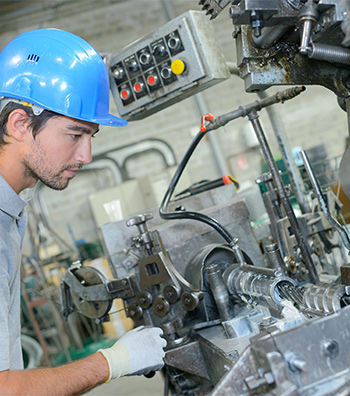Spare Parts Management in Production & Maintenance
Post By: Ryan King On: 01-07-2019 - Industry Trends - Manufacturing

According to a 2017 survey, UK manufacturers were sacrificing some £180 billion of their profits on maintenance costs, and 2018 saw most manufacturers experiencing downtime every 2.5 months, at an average cost of £12,042 for each instance of machine failure or malfunction. This means that many companies may be spending more than £60,000 on annual maintenance, which could approach 6-10% of a manufacturer's gross fixed assets.
On top of this, customer satisfaction is substantially reduced when there are shortfalls on deliveries and quality, costing the supplier a substantial amount in customer churn and putting them at a competitive disadvantage. Adding these indirect costs to anticipated component failures, and including the investment required in short-term replacements, equipment downtime could be costing UK manufacturers upwards of £700 billion a year.
Maintenance expenditure is typically 2%-20% of plant replacement value, depending on the specifics of the industry and operations. This means that every department of the business, including production and maintenance, is put under constant pressure to cut costs and increase profits. Strategic spare parts management is therefore of vital importance, and this depends in its turn on the type of maintenance strategies and management carried out by the business. These strategies commonly fall into three main categories:
1. Reactive or “Fire Service” Maintenance
The reactive approach follows the old practice of “if it ain't broke, don't fix it”. This means that the fire service (i.e. a maintenance contractor) is only called in when a machine failure has already occurred, either from a defective component, accident, user error or faulty process. This immediately results in costs for loss of production and sales, possible expenditure on outsourcing maintenance, plus potential contractual penalties. It often means purchasing replacement parts at higher prices due to the urgency of the situation, and puts the company at a pricing disadvantage. In another survey, it was found that UK companies still spend around 60% of their time on reactive maintenance, and correspondingly less on other strategies.
2. Preventive or Scheduled Maintenance
Preventive or scheduled maintenance is the second best strategy for preventing downtime, ensuring the higher plant availability that is crucial to efficient production. Carrying out maintenance at regular intervals means that the operating condition of the plant is frequently reviewed, and any worn components can be replaced at the next scheduled maintenance interval.
In order to ensure higher plant availability, preventive maintenance strategies include setting up a dedicated spare parts warehouse which should include all critical components. As long as no maintenance contract is in place for repairs and service, this would provide a useful backstop for immediate maintenance needs, taking into account that storage facilities would also have to be provided.
3. Predictive Maintenance
Predictive maintenance is a strategy that is becoming much more prominent with the increase in AI and automated systems. With the advent of Industry 4.0, it is far easier to assess and predict machine failure with acute technological precision. Models of predictive maintenance use machine learning algorithms, and the mass of data collected from various automated sensors, to monitor performance round the clock. This makes it much easier to assess the fallibility of machines, and predict what components will break before any failure actually takes place.
The type, age and functions of machinery produce various technical faults that can lead to machine downtime, but the most common are overheating and vibration. The short circuits and cascading technical failures which ensue from these common faults can easily be prevented by predictive maintenance software, which can foresee and forestall such breakdowns. So far, the percentage of companies taking advantage of such software tools is still low, but experts suggest that as we continue to be impacted by technological advances, and automated systems become more common and more complex, predictive maintenance strategies will eventually come to predominate.
In actual practice today, most companies rely on a mix and match of strategies for spare parts management, identifying critical components for each asset using default risk analysis. High risk components can either be purchased and stored, or ordered as needed from a manufacturer with high speed delivery. Companies can also use a technical distributor such as Rowse for replacement components, and this is especially useful if the items are obsolete or the system is outside its maintenance contract. At Rowse we specialise in obtaining obsolescent components, and pride ourselves on finding the most obscure items or those that have been discontinued. This offers a potential reduction on investment in new plant, as existing machinery can be given a new lease of life.
Get More From Rowse Straight To Your Inbox




